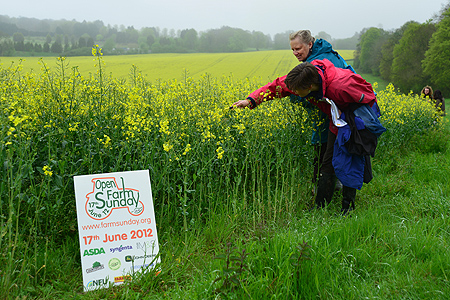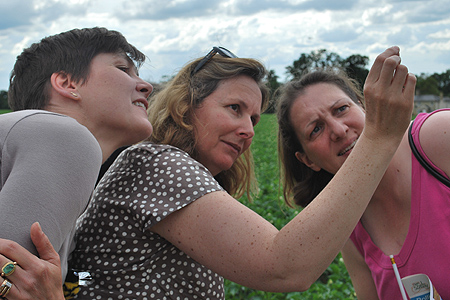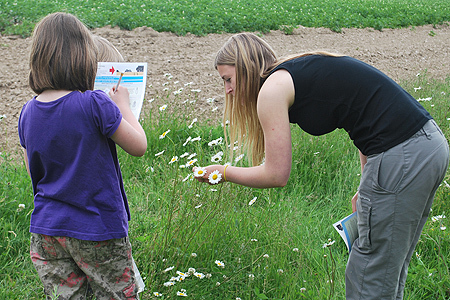
The results of a unique insect survey involving a collaboration of general public and scientists has highlighted the wealth of pollinating bees and other insect species active in commercial oilseed rape and other crops. The first findings will be presented at the British Ecological Society’s Annual Meeting this week (Tuesday 18 December 2012).
For the Open Farm Sunday Pollinator Survey, sponsored by the Syngenta Operation Pollinator initiative, visitors to the popular annual farm event were turned into an army of citizen scientists - recording more than 16,000 insects in 600 surveys, across 36 farms in 23 counties. The survey was organised by the Centre for Ecology & Hydrology (CEH), working with scientists from Syngenta, entomological consultant Mike Edwards and LEAF (Linking Environment and Farming).
According Dr Helen Roy of CEH, insect pollinators play a crucial role in producing food crops and in maintaining biodiversity in natural ecosystems. “However, the steady decline in the number of insect pollinators could threaten our ability to feed a growing world population.
“Finding methods for cost-effective, long-term monitoring of insect pollinators, such as the Open Farm Sunday (OFS) Pollinator Survey, is essential to identify what changes are occurring, and the success of measures aiming to redress the declines.”

CEH ecologists and students helped OFS visitors conduct surveys on both crop and non-crop habitat, to tease out which habitats supported most insect pollinators. They recorded 6,738 insects on crops and 9,642 on non-crop habitats. Flies were the most abundant group of insects across farms, with butterflies the least recorded.
Dr Roy reported the results show that the abundance of bees in crops was strongly affected by the type of crop: oilseed rape and beans had significantly more bees than cereal crops, pasture without animals or vegetables. The survey also confirmed the attractiveness of flowering field margins for pollinating insects.
“Apart from oilseed rape and linseed, more bees were found in flowering field margins than in crops, and mean bee abundance on flowering field margins was significantly higher than on hedgerows,” she added.

Now in its seventh year, Open Farm Sunday has attracted more than one million visitors to UK farms since 2006, and in 2012 the organised the first ever national farm pollinator survey during the event.
“This is the first national pollinator survey on farms and demonstrated the value of engaging people in recording insects,” added Dr Roy. “A staggering 16,380 insects were counted during one day - involving citizen scientists of all ages. The large-scale dataset provides a unique resource for exploring relationships between insect abundance and land use. It demonstrates the value of flowering field margins and other non-crop habitats on farms.”
As well as showing the importance of flowering crops and flowering field margins to insect abundance, the results show how much citizen scientists can achieve. “The Open Farm Sunday Pollinator Survey highlighted the enthusiasm of people for getting involved,” says Dr Roy. “We plan to repeat the survey in 2013 and aim to build a long-term large-scale picture of insect abundance on farms across the UK.”
Dr Helen Roy and masters student, Lucy Cornwell, who worked with the CEH team, will present their full findings on to the British Ecological Society’s Annual Meeting at the University of Birmingham.
